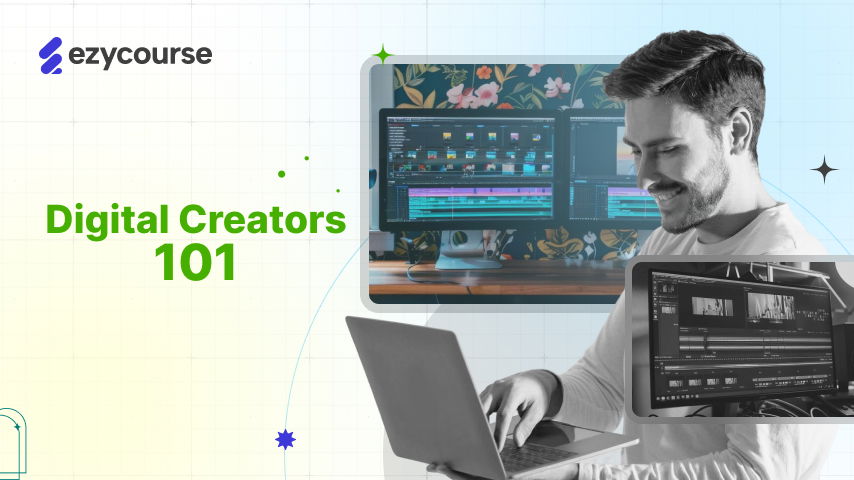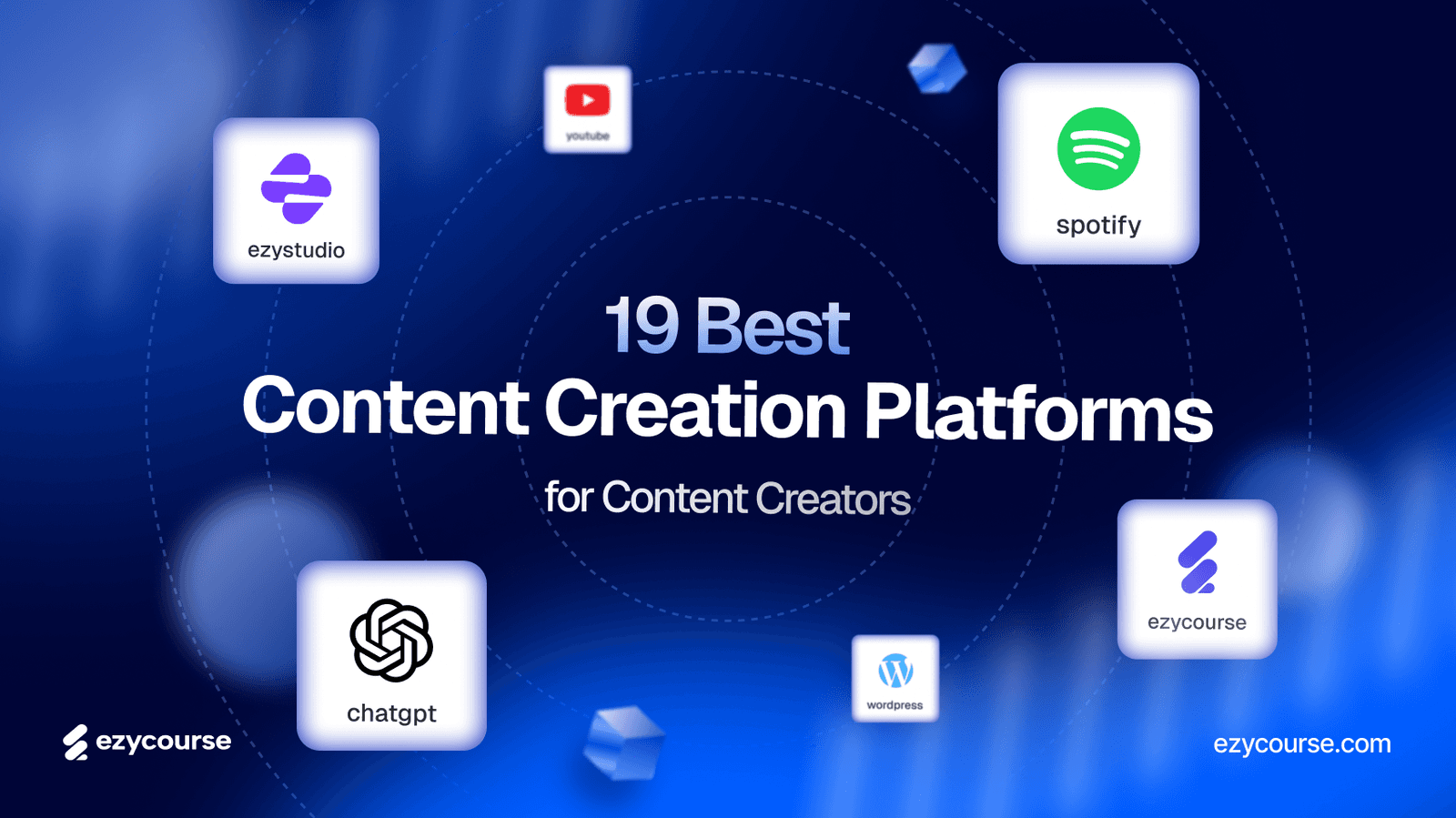Digital creation today means more than just posting online. It's a real way to make money doing what you love.
From YouTube videos and Instagram reels to blogs and podcasts, creators use different platforms to share their voices and connect with people.
What's the most exciting part? You don't need a big studio or a huge team. Anyone can start with the right tools, creativity, and smart planning.
There are many ways to earn money, whether through brand deals, ad money, or selling digital products.
Here we'll cover everything from what is a digital creator, the tools creators use, the most popular platforms for growing, and ways to turn content into income.
So let's jump right in!
What Is A Digital Creator

If you are curious to know what is a digital creator, let’s explain it first. A digital creator is someone who produces and shares original content, such as videos, blogs, photography, podcasts, guides, or graphics, across digital platforms like-
YouTube
Instagram
TikTok
Blogs or podcasts.
They usually target a specific niche or audience and provide educational, entertaining, or inspiring content.
However, what sets digital creators apart is their consistent output and focus on building a community or following online.
They often develop recognizable personal brands or styles, engage with their audience, and respond to comments.
In contrast to casual social media users, digital creators usually monetize their work through advertising, sponsorships, merchandise, memberships, or digital sales.
Real Examples
One well-known digital creator is Huda Kattan. She started by sharing makeup tutorials on Instagram, building a loyal audience with her expertise and engaging content. Over time, she leveraged her digital presence to launch Huda Beauty, now a multi-million-dollar cosmetics brand.
Another example is Jeremy Ethier, a fitness creator on YouTube, who produces science-based workout videos and has built a thriving business around his content.
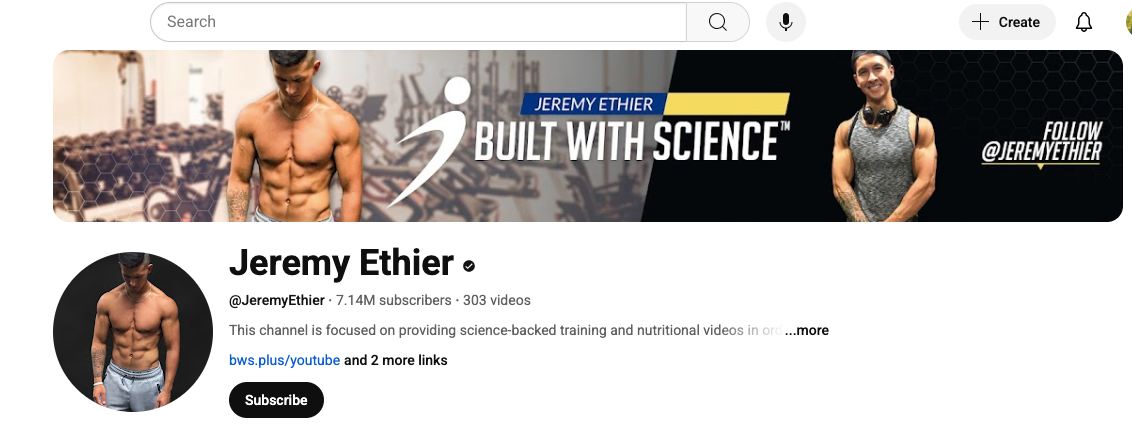
Matt D’Avella started making self-improvement videos on YouTube. Now he runs online courses, has millions of subscribers, and earns from brand deals and digital products.
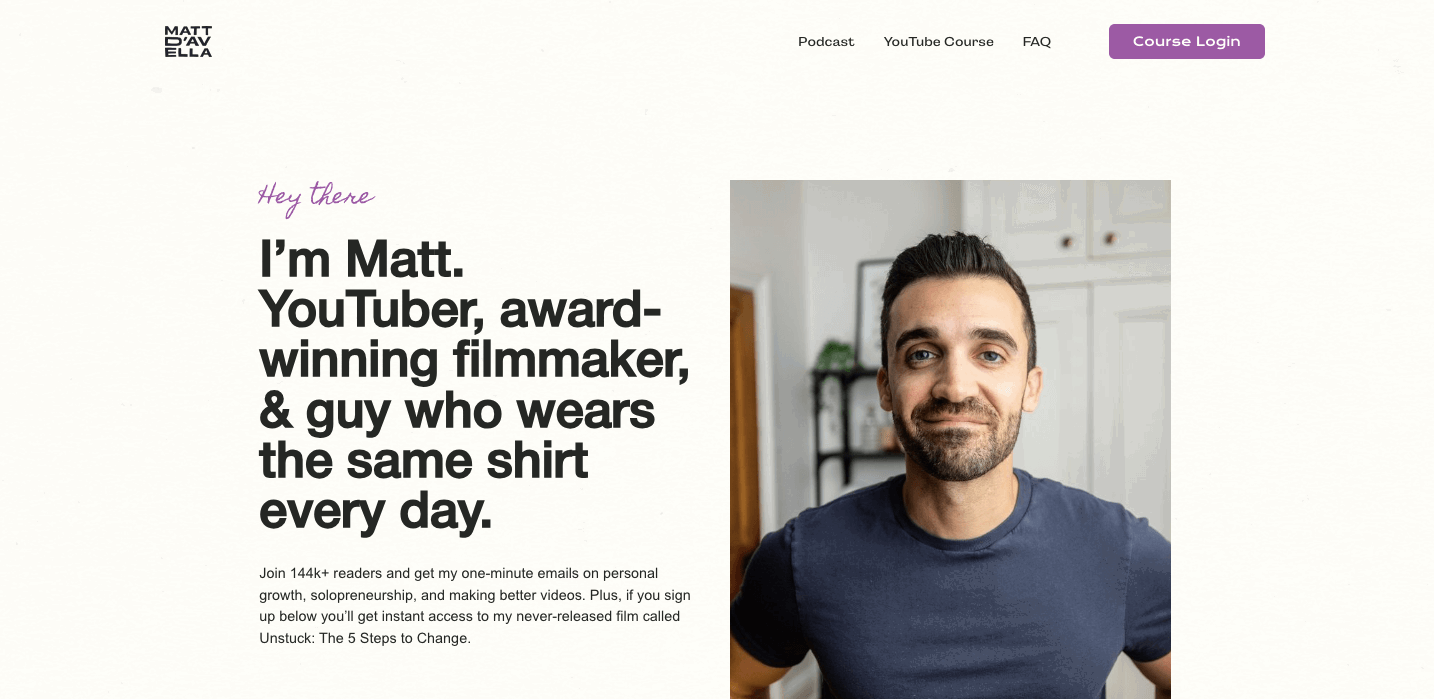
Maya Washington (Shameless Maya) used YouTube to teach creative skills and now runs a business that provides courses, workshops, and speaking events.
What Does a Digital Creator Do?
Actually, a digital creator does multiple things. Let’s unpack them:
1. Content Creation
Writing scripts, blogs, captions, or newsletters
Filming and editing videos or taking photos
Recording and editing podcasts
Designing graphics, eBooks, and templates
2. Publishing & Scheduling
Uploading videos to YouTube or Instagram
Scheduling blog posts or newsletters
Publishing new course lessons on platforms like EzyCourse
3. Audience Engagement
Responding to comments and DMs
Running community groups (Facebook, Discord, etc.)
Hosting live Q&As, webinars, or AMAs
Asking for feedback and creating polls
4. Monetization & Strategy
Working with brand sponsors
Launching digital products, courses, or memberships
Setting up affiliate links or paid newsletters
Managing income streams and keeping financial records
5. Marketing & Growth
Running email marketing campaigns
Creating social media strategies
Running ads on Instagram, Facebook, or YouTube
Pro Tips: If you are a digital creator, you may need to create a website of your own. Many successful digital creators use platforms like EzyCourse to host their business websites. With this platform, you can showcase all your creations, build engaging communities, offer courses, memberships manage events, run email campaigns, and sell digital or physical products - all from one single website.

How Digital Creators Make Money (10 Revenue Streams)
Posting pretty content as a digital creator is no longer enough. It's a full-on business.
Here are 10 ways creators make money online:
1. Ad Revenue
This is often the first paycheck creators see.
Platforms like YouTube and Facebook pay a share of ad money when viewers watch or click ads during videos.
It might start small, but as views grow, so does the income.
2. Brand Sponsorships
Companies love to work with creators who have a loyal audience. They'll pay to be featured in videos, posts, or stories.
A creator talks about the brand in their voice and gets paid well, depending on reach and engagement.
3. Affiliate Marketing
This one's simple: creators recommend products using a special link. If someone buys through that link, the creator earns a commission.
It's like saying, "Hey, I love this tool!" and getting rewarded when others try it too.
4. Selling Online Courses
Many creators share what they know through video courses. Whether it's photography, cooking, fitness, or marketing, people are willing to pay for expert advice. Learn how to create an online course.
5. Ebooks & Digital Products
Ebooks presets, templates, or toolkits are digital products that require effort to create once but can be sold again and again. They're a favorite income stream because there's no inventory or shipping involved.
6. Subscriptions
Fans pay monthly to get exclusive content, such as behind-the-scenes videos, early access, or personal Q&As. These platforms help creators earn a steady income from their community.
7. Coaching and Consulting
Some creators offer 1-on-1 sessions or group coaching programs.
They guide others through various processes, including building a brand, learning design, or starting a YouTube channel and selling on YouTube. It's personal and often high-ticket.
8. Merchandise
T-shirt, mug, and tote bag creators put their slogans or art on everyday items. Loyal fans love wearing or using merchandise that represents someone they follow.
9. Licensing Content
A viral video or a catchy song?
Other companies might want to license it for their ads or shows. Creators get paid when others legally use their work.
10. Crowdfunding or Tips
Sometimes fans want to say "thanks." Platforms like Buy Me a Coffee or Ko-Fi let people send small donations or tips to support creators' work directly.

How Much Does A Digital Creator Make Money?

Digital creators’ earnings vary widely depending on audience size, engagement, niche, and monetization strategies.
In 2025, top YouTubers such as MrBeast earn around $54 million annually, driven by billions of views and diverse revenue streams.
Smaller creators with about one million subscribers can make roughly $259,000 per year from ad revenue alone, averaging close to $1,000 per video.
On average, YouTube pays creators between $2 and $25 per 1,000 views, depending on factors like viewer location and ad engagement.
For example, CPM (cost per thousand views) rates are highest in countries like Norway ($43.15) and Germany ($38.85), while U.S. CPM averages around $13.
However, revenue depends not just on views but also on how many viewers watch or click ads.
Besides ads, creators boost income through sponsorships, merchandise, memberships, and digital products, ensuring sustainable income.
6 Must-Have Tools for Digital Creators
So, we have discussed how you can be a digital creator. Now, you should know which tools you actually need:
1. Canva (Design & Branding)
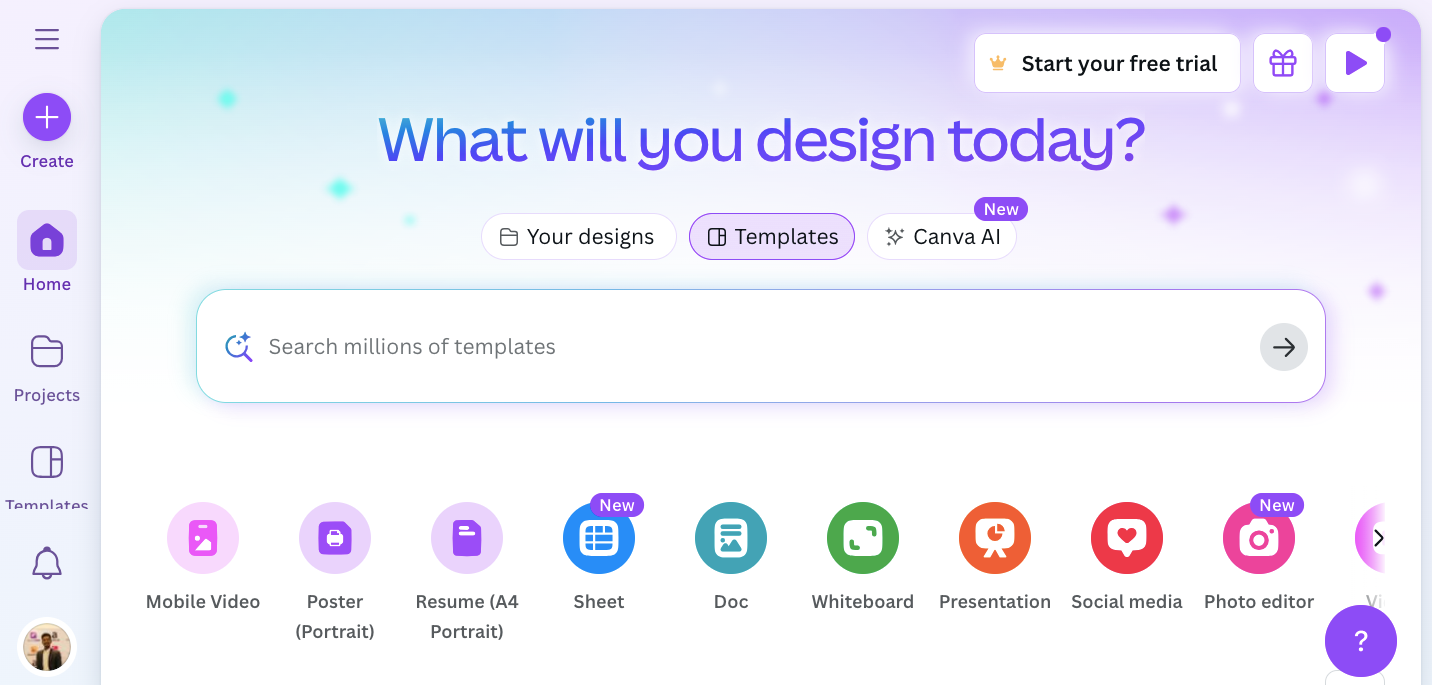
Canva is your go-to tool for creating everything from social media graphics and YouTube thumbnails to resumes, media kits, and digital products.
Why it’s a must-have:
Drag-and-drop interface (no design skills needed)
Thousands of templates for all platforms
Great for maintaining brand consistency
Pro Tip: Use Canva Pro to save brand fonts, colors, and logo for faster content creation.
2. CapCut or Adobe Premiere Rush (Video Editing)
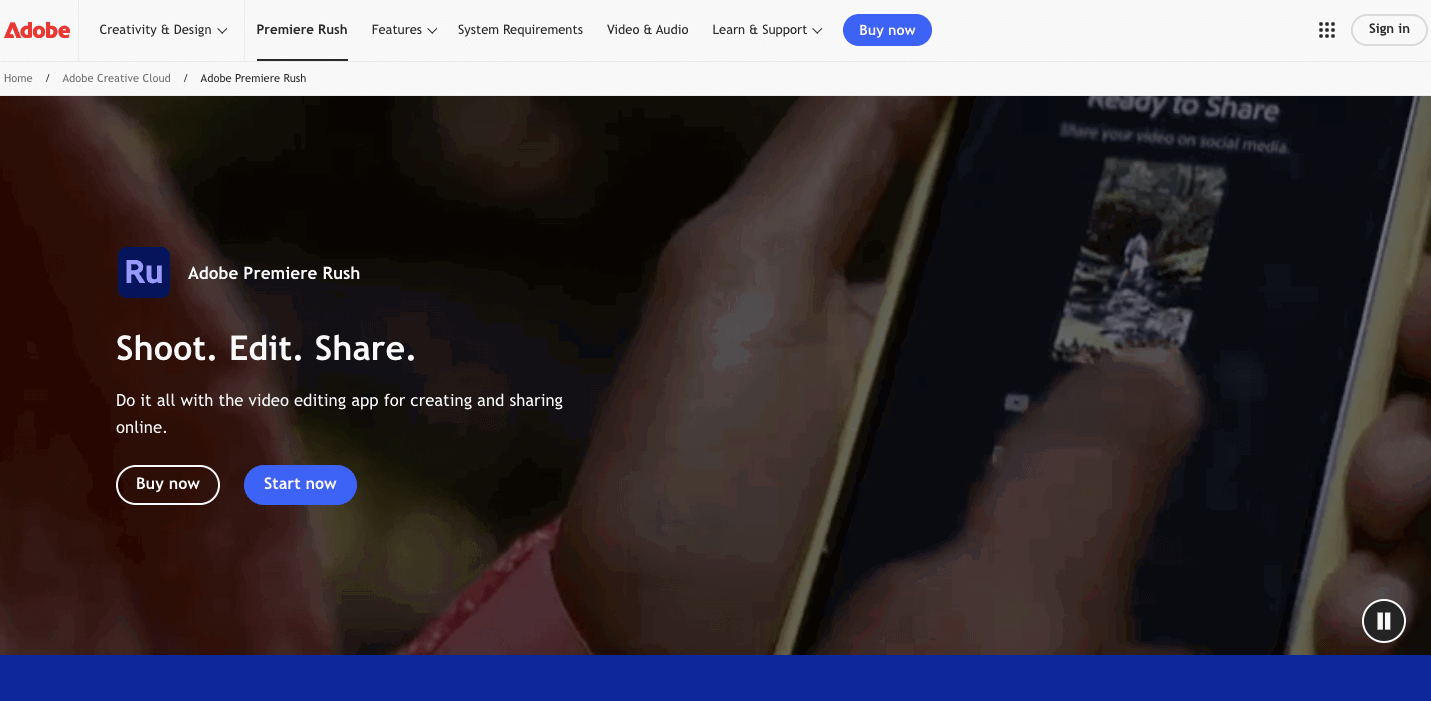
You need video content, whether you’re on TikTok, YouTube, or Instagram Reels. CapCut is beginner-friendly and free, while Premiere Rush is more robust but still simple.
Why it’s a must-have:
Trim, cut, and add transitions easily
Add captions, music, and sound effects
Export in platform-ready formats (16:9, 9:16, etc.)
Example: TikTok creators like Khaby Lame use simple editing tools to add humor and clarity without overdoing effects.
3. Notion or Trello (Planning & Content Calendar)
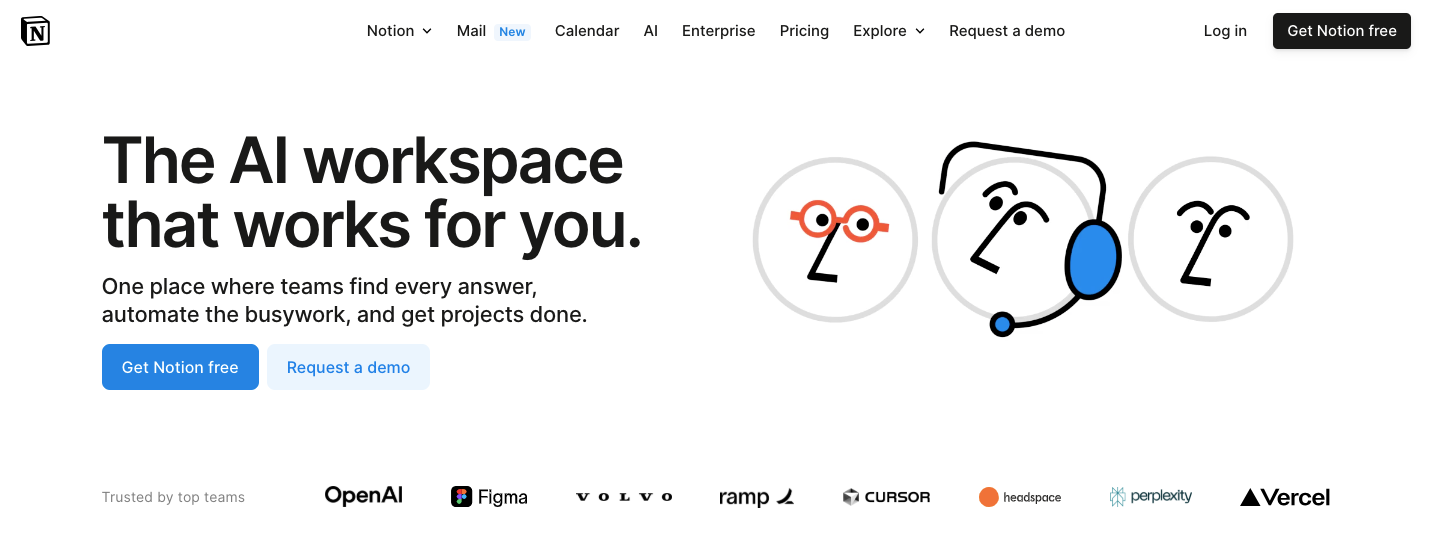
Staying organized is half the battle. Notion and Trello let you manage content ideas, plan weekly posts, track goals, and even store brand assets, all in one place.
Why it’s a must-have:
Keeps you consistent and strategic
Great for collaboration if you work with a VA or editor
Helps avoid burnout with better planning
Use Notion templates for content calendars or Trello boards for visual task tracking.
4. Google Workspace (Collaboration & Storage)
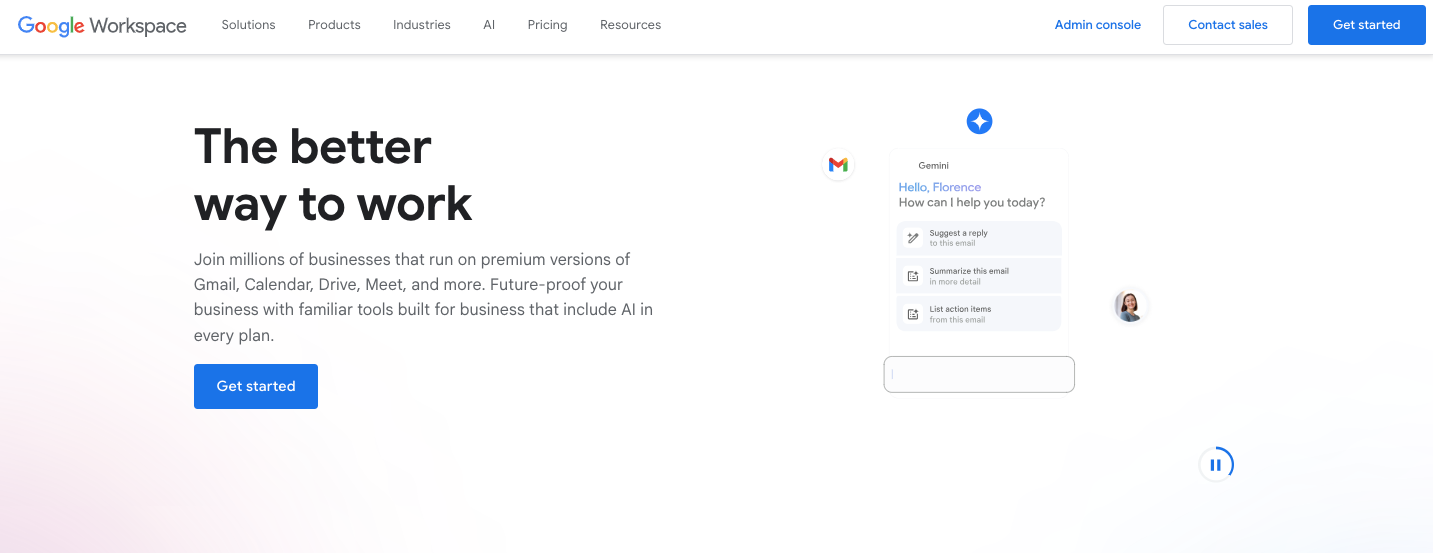
From writing blog drafts in Google Docs to storing raw video files in Drive, Google Workspace is essential for efficiently managing content.
Top uses:
Shareable links for brand collaborations
Store content ideas, contracts, and analytics reports
Use Google Sheets for tracking growth or income
Docs and Slides work beautifully if you're creating downloadable lead magnets or digital products.
5. Metricool or Buffer (Scheduling & Analytics)
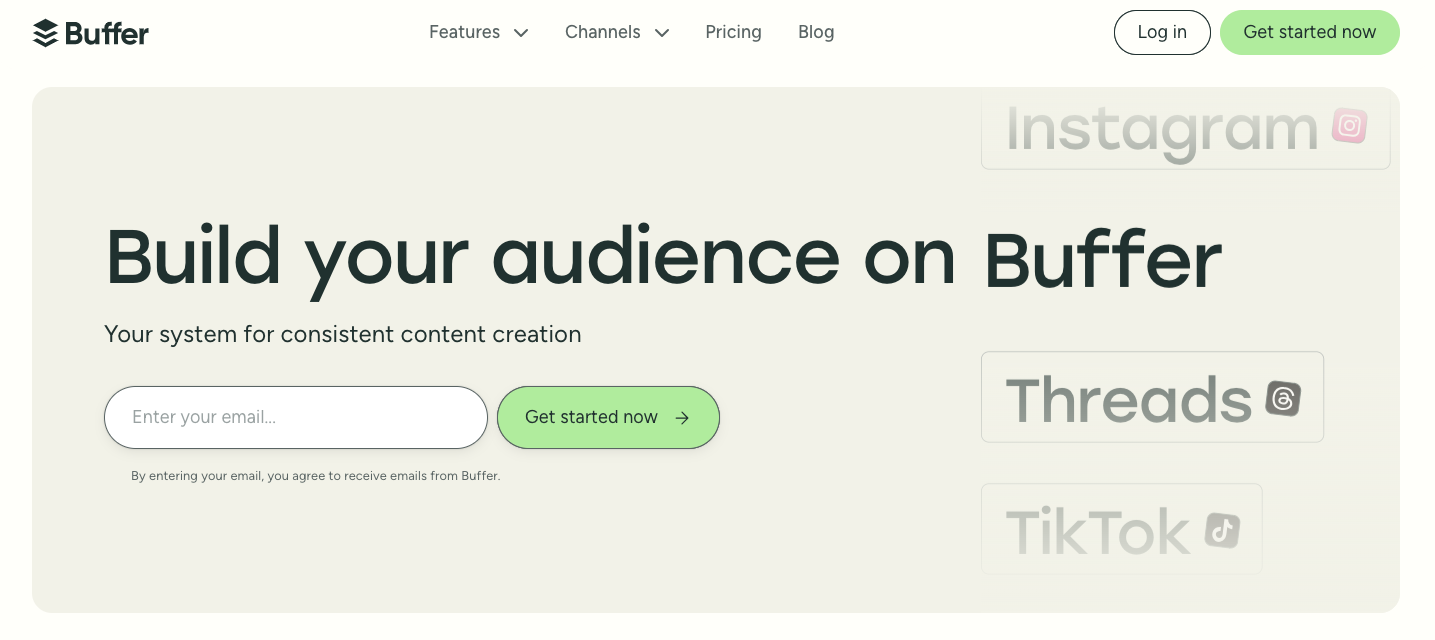
Posting regularly is key, but doing it manually can be a grind. Metricool and Buffer help schedule your posts and analyze what’s working best.
What makes them essential:
Pre-schedule content across Instagram, TikTok, LinkedIn, Twitter, and more
See detailed performance metrics
Optimize posting times based on audience behavior
Many creators use Metricool for Instagram growth or Buffer to manage multiple accounts simultaneously.
6. Remove.bg or Cleanup.pictures (Image Editing)
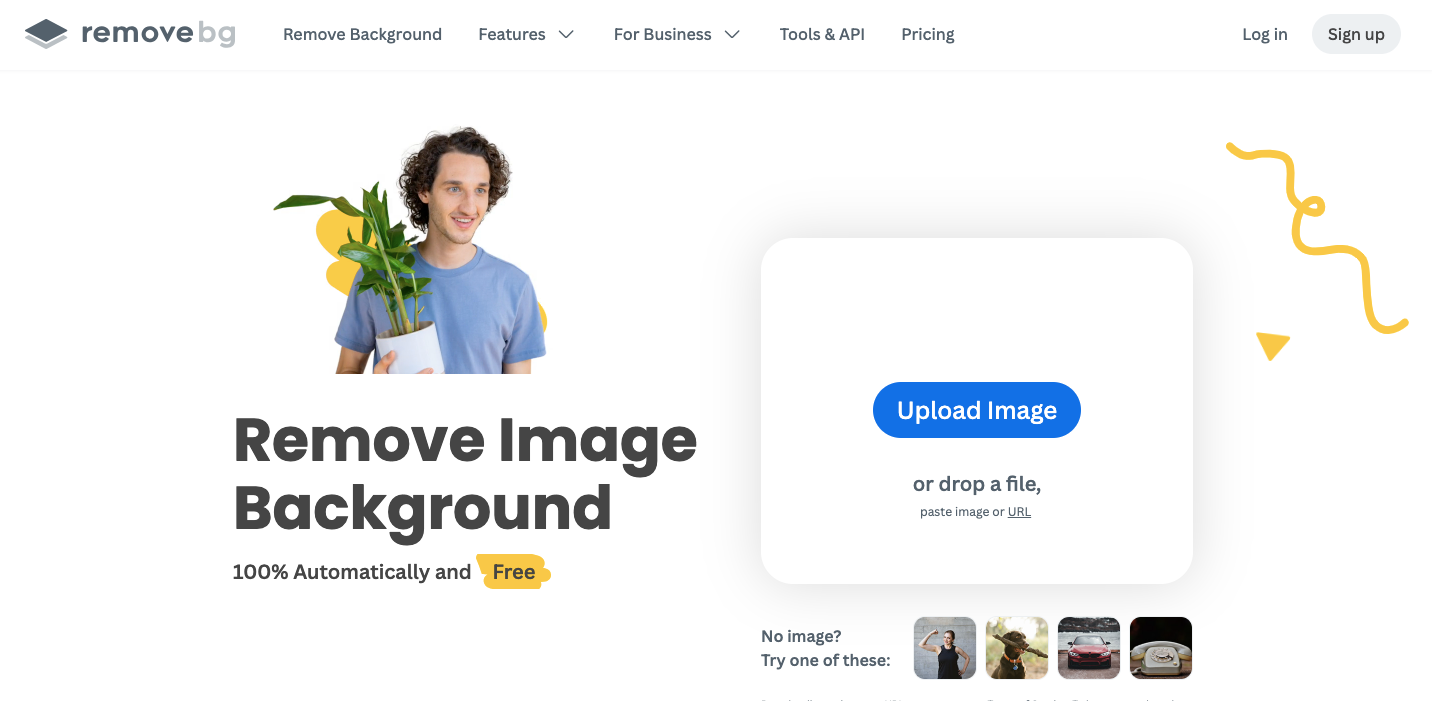
Need to remove a background, fix a messy scene, or create transparent logos fast? These tools use AI to do it in seconds.
Why you’ll use them constantly:
Quick background removal for thumbnails and profile pics
Clean up product photos or visual distractions
Save time on manual Photoshop edits
Pair these tools with Canva for pro-level visuals.
5 Best Platforms for Digital Creators to Share & Sell
Choosing the right platform can have a major impact on the success of a creator. Here are the best platforms for creators to share their work and make money.
1. EzyCourse
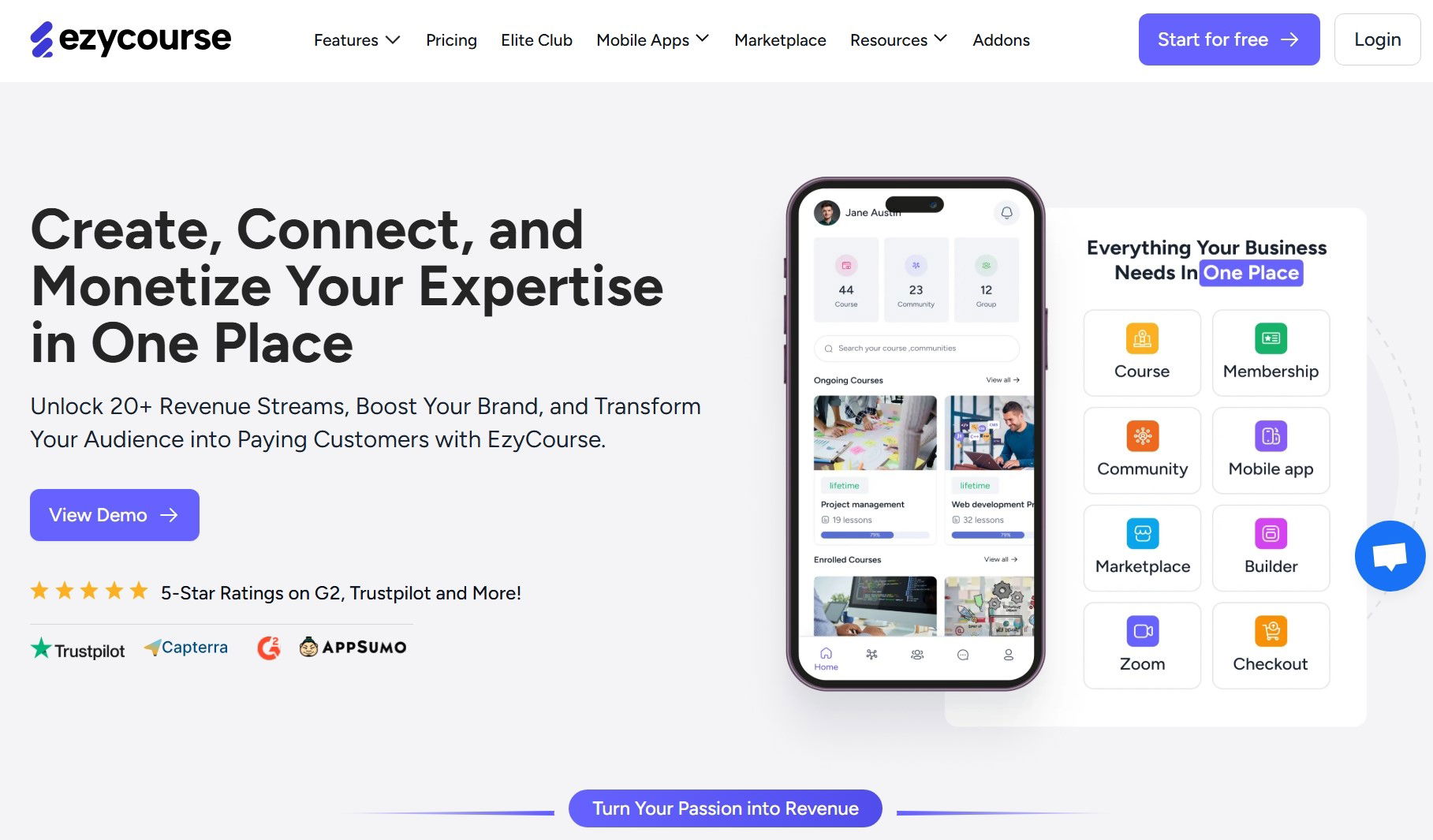
What Features Do You Get?
Drag-and-drop website builder
All-in-one platform for digital product selling
Support courses, and coaching,
Built-in email marketing tools
Supports selling memberships & subscriptions
Sell digital downloads (eBooks, templates, PDFs)
12+ payment integration (Stripe, PayPal, and more)
No coding required
Host webinars and live sessions
Affiliate system for extra income
EzyCourse is a powerful all-in-one platform designed specifically for digital creators who want to monetize their knowledge without tech struggles.
Whether you’re launching a course, building a paid community, or selling digital downloads, EzyCourse makes it easy to do everything in one place.
Also, It’s perfect for creators looking to build a branded experience, complete with email marketing, community engagement, and sales automation. You don’t need any coding skills just ideas and the drive to share them.
It saves time, reduces cost, and helps creators earn faster by simplifying the entire process from content creation to income generation.
How You Can Earn:
Sell online courses and training programs
Offer coaching packages or consultations
Create and sell memberships or subscriptions
Sell digital products (eBooks, presets, PDFs)
Host live classes and webinars
Charge for access to private communities
Offer affiliate programs to others to promote your content
Pricing Overview
Essential – Best for Personal Creators ($59/month)
Includes unlimited courses, custom pages, EzyCourse app, 2 communities, SCORM, lead generation tools, and 5 digital products.
Pro – Best for Professional Creators ($139/month)
Everything in Essential + white-label apps, gamification, 5 communities, affiliate program, appointment scheduler, and 50,000 monthly marketing emails.
Unlimited – Best Value ($199/month)
All Pro features + unlimited usage, VIP support, Zoom license, DRM, private chat, 100,000 emails/month, and multi-level affiliates.
Elite – For Businesses ($299/month)
All current & future add-ons (worth $17K+), white-label apps, Zoom license, 500,000 marketing emails/month, top-priority support, and CEO access.

Good Things:
Combines website builder, email marketing, and product sales in one place.
Allows selling courses, digital products, subscriptions, and coaching with no plugins.
Includes built-in community and membership tools to engage your audience.
Enables hosting webinars and live classes for direct interaction.
Integrated Stripe and PayPal for global payments.
Offers an affiliate system to help creators earn more via referrals.
Mobile-friendly and secure, making it accessible on all devices.
No coding required—perfect for beginners and non-tech creators.
Helps automate marketing with lead tools and email campaigns.
Offers white-label apps and DRM features for advanced branding and protection.
Not-So-Good Things:
Slight learning curve for first-timers
No free plan

2. YouTube
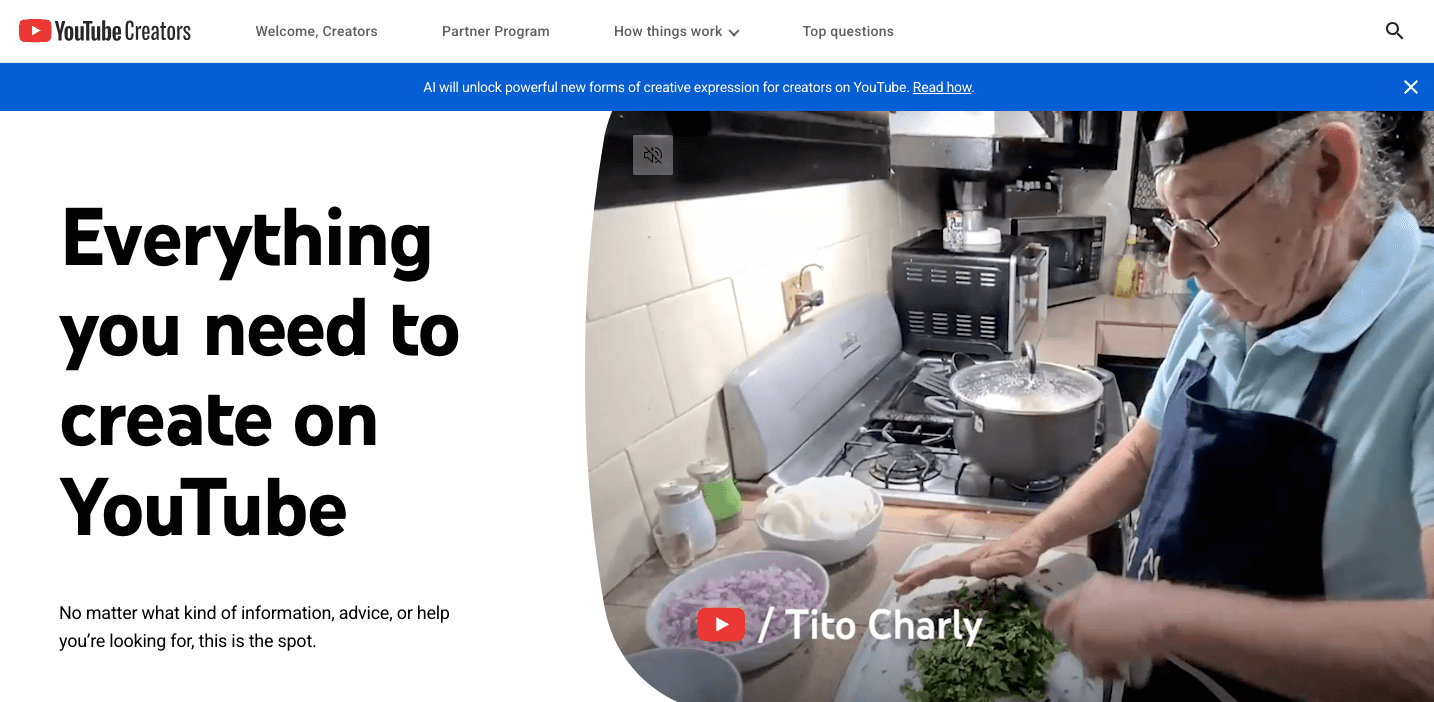
What Features Do You Get?
Massive global audience
Multiple monetization streams
Built-in analytics and insights
Long-form and short-form support
Partner Program (ad revenue)
Live streaming and Super Chat support
Integration with affiliate platforms
Merch shelf for product sales
Creator Studio for editing and management
Strong SEO discoverability via Google
YouTube is the go-to platform for video creators. With billions of active users, it offers unmatched potential to grow an audience and monetize through ads, sponsorships, memberships, and more.
May be you're a vlogger, educator, or entertainer, YouTube rewards consistency and quality. Plus, its search engine power (owned by Google) means your content can keep working for you over time.
Even short-form creators now have opportunities to earn via Shorts. If you love creating visual content and engaging an audience, YouTube can become both your creative outlet and your income stream.
How You Can Earn:
Join the YouTube Partner Program (ad revenue)
Get paid for sponsored content and product placements
Enable channel memberships
Use Super Chat and Super Stickers during livestreams
Sell merch via the built-in merch shelf
Add affiliate links in video descriptions
Drive traffic to paid courses or services off-platform
Pricing Overview
As of 2025, YouTube Premium pricing in the United States is:
The Individual plan costs $13.99 per month, with an annual option available at $139.99, offering savings of about $48 compared to monthly payments.
The family plan costs $22.99 per month and covers up to six members of the same household. A student plan for verified students for up to four years is also available at $7.99 per month.
YouTube is testing the two-person Premium subscription tier in select countries, including India, France, Hong Kong, and Taiwan. Like Spotify's Duo plan, the subscription is discounted for two users sharing it.
Prices vary widely globally. For example, in Argentina, the individual plan is as low as $0.90 per month, while in the UK, it is approximately $17.34 per month.
Due to currency fluctuations and inflation, some regions, like South Africa, will see price increases of up to 36% starting in July 2025.
Good Things:
Massive global audience for unlimited content reach.
Offers multiple revenue streams: ads, merch, memberships, and more.
Great SEO via Google, making content easily discoverable long-term.
Supports short-form (YouTube Shorts) and long-form content.
Live streaming with Super Chats and stickers for fan engagement.
Built-in editing tools and analytics in Creator Studio.
Allows affiliate marketing via video descriptions.
Merch shelf integration helps sell products directly under videos.
Partner Program unlocks ad revenue as you grow.
Ideal for content that keeps earning over time (evergreen content).
Not-So-Good Things:
Hard to grow quickly without consistent uploads
Requires video editing and equipment to stand out
3. Patreon
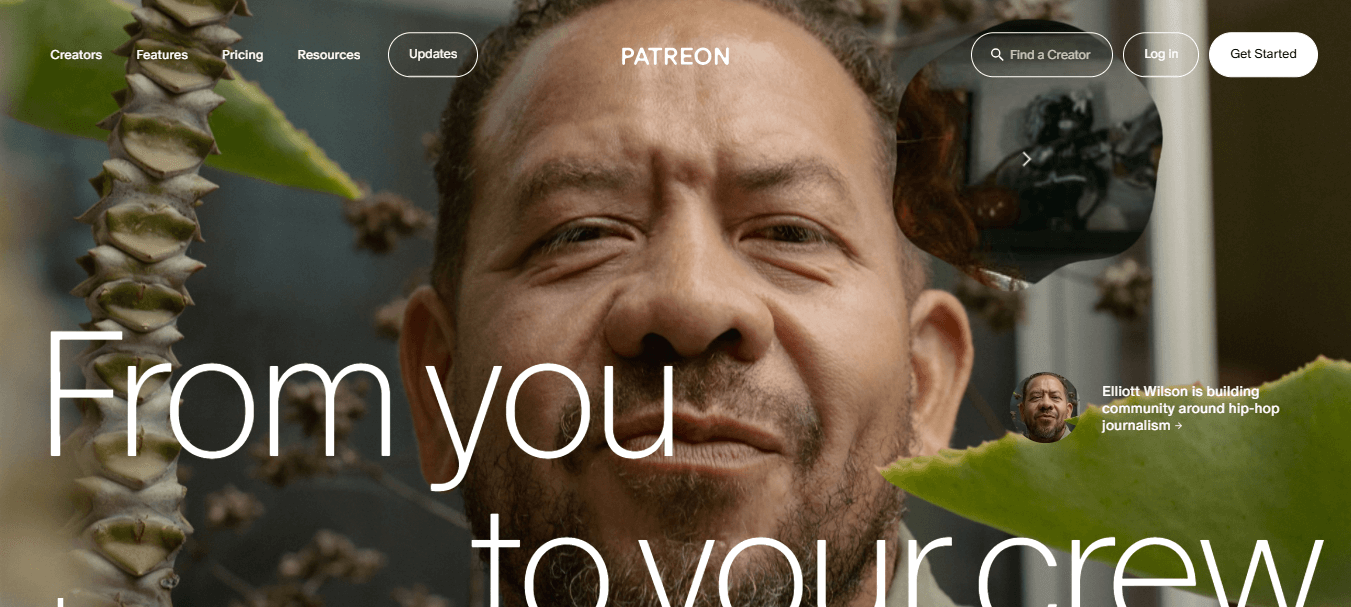
What Features Do You Get?
Monthly membership model.
Set custom pricing tiers.
Offer exclusive content to paying fans.
Supports audio, video, and text.
Integrates with Discord, Zapier, etc.
Built-in community messaging.
Direct payout system.
Detailed patron analytics.
Post scheduling & content locking.
Mobile-friendly for creators and fans.
Patreon is ideal for digital creators with a loyal niche audience who want to offer premium content in exchange for monthly support.
If you’re an artist, podcaster, or writer, Patreon allows you to set up membership tiers and provide exclusive rewards to your subscribers.
Plus, it works particularly well for creators who don’t want to rely on ads and prefer building a sustainable, fan-supported model.
From early access to bonus material to private chats, Patreon creates a deeper connection with your most supportive fans and gives them a reason to stay.
How You Can Earn:
Charge monthly subscriptions for content access.
Offer bonus content (behind-the-scenes, bloopers, etc.).
Give early access to public releases.
Host private livestreams or Q&As.
Share exclusive downloads like PDFs or templates.
Create patron-only polls and engagement.
Offer one-on-one or group sessions at higher tiers.
Pricing Overview
Start for Free: Access core tools at no cost; monetize when you're ready.
Pro Plan:
8% of your earnings
Includes: Membership tiers, analytics, support, and engagement tools.
Premium Plan:
12% of your earnings
Includes everything in Pro, plus: Partner manager, team accounts, merch integration.
Commerce Tools
Sell digital products with no listing fees
Access shop features and sales analytics.
Additional Fees:
Payment processing, currency conversion, payout fees, and taxes apply.
Good Things:
Reliable monthly income through fan memberships.
Offers multiple tiered pricing levels for fans.
Ideal for exclusive, behind-the-scenes, or early access content.
Works well for all media types: video, audio, writing.
Easily integrates with Discord and other community tools.
Detailed patron analytics to track growth and retention.
Mobile-friendly for creators and fans alike.
Built-in direct messaging helps build fan relationships.
Schedule content and lock posts to specific tiers.
No need for ads or sponsorships to earn income.
Not-So-Good Things:
Relies heavily on your existing fan base
Fees increase with higher-tier plans

4. Gumroad
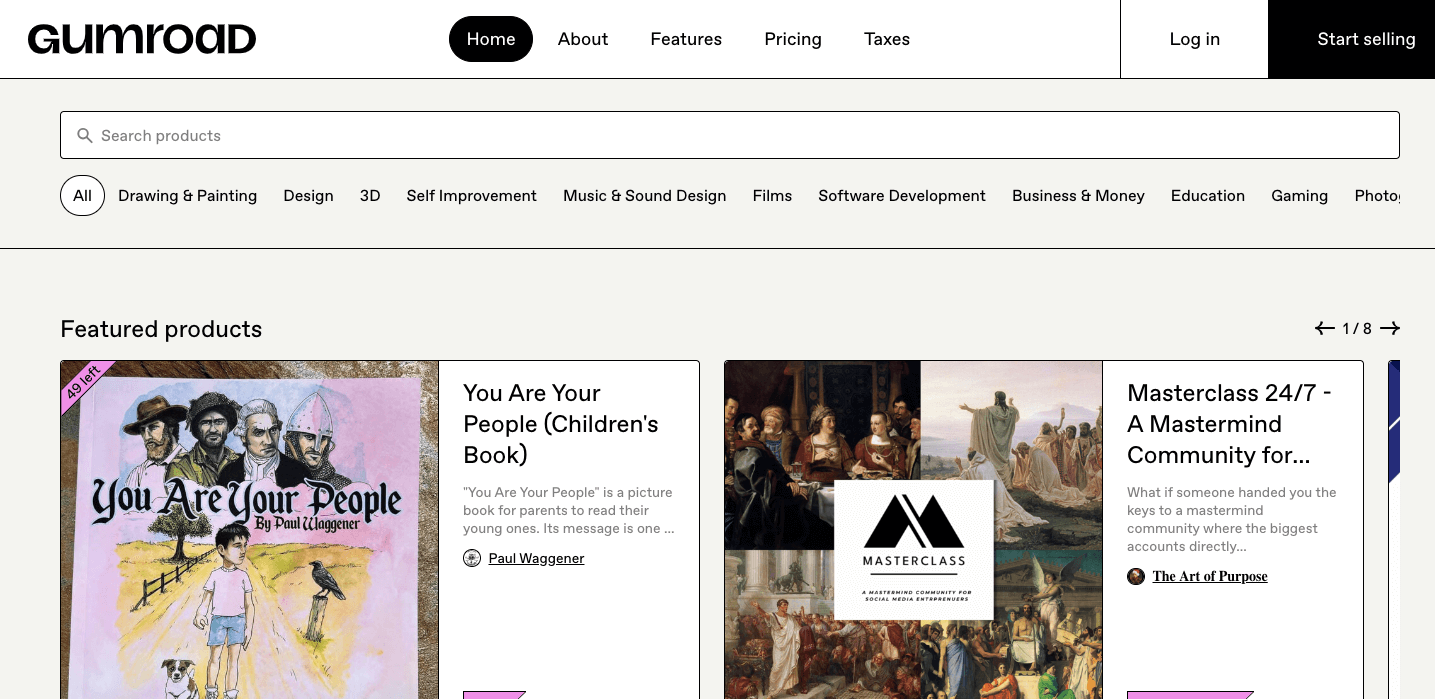
What Features Do You Get?
Simple digital storefront setup
No monthly fee (pay per sale)
Global payment support
Instant file delivery
Easy checkout and mobile-optimized
Supports subscriptions & pay-what-you-want pricing
Sell everything from PDFs to videos
Built-in analytics dashboard
Email marketing built-in
Embeddable purchase links and buttons
Gumroad is one of the easiest ways to sell digital products online.
If you're selling an eBook, Lightroom preset, course, or music song, Gumroad will handle the payment and delivery.
It’s great for creators who don’t want to manage a full website or deal with backend logistics. You can start free and only pay when you make a sale.
For creators who want to focus on product creation and less on tech setup, Gumroad is a fast, simple, and scalable tool to launch a digital business.
How You Can Earn:
Sell eBooks and written guides
Offer music, templates, and design assets
Charge for video training and masterclasses
Sell recurring subscriptions or memberships
Offer pay-what-you-want products
Add bundle offers or upsells
Run limited-time promotions for extra urgency
Pricing Overview
You only pay when you make a sale there are no monthly fees, no setup costs, and no hidden charges.
1. Direct Sales
Fee: 10% + $0.50 per transaction
This applies when a customer purchases directly from:
Your profile page
A direct product link you share
Example: If you sell a digital item for $20, the platform takes $2.50 ($2.00 from the 10% fee + $0.50 fixed fee). You keep $17.50.
2. Discover Marketplace Sales
Fee: 30% per transaction
This applies when a new customer finds your product via the platform’s Discover section (like a curated marketplace).
Example: If the same $20 item is purchased via Discover, the platform takes $6.00 (30% of $20). You keep $14.00.
What’s Included in the Fees
Hosting and delivery of your digital products
Marketing tools and analytics
Secure payment processing
Customer support infrastructure
Access to a growing marketplace of buyers (with the 30% Discover fee)
Good Things:
No monthly fee, only pay when you make a sale.
Super simple setup – ideal for beginners.
Supports global payments and instant delivery.
Pay-what-you-want pricing encourages impulse buys.
Sell everything from eBooks to video courses to art.
Built-in analytics show product performance.
Email marketing included to engage past customers.
Embeddable checkout buttons for your website or blog.
Offers subscriptions and one-time product sales.
Great for creators focused on passive income streams.
Not-So-Good Things:
Fewer customization options
Not ideal for community-building or advanced marketing
5. TikTok
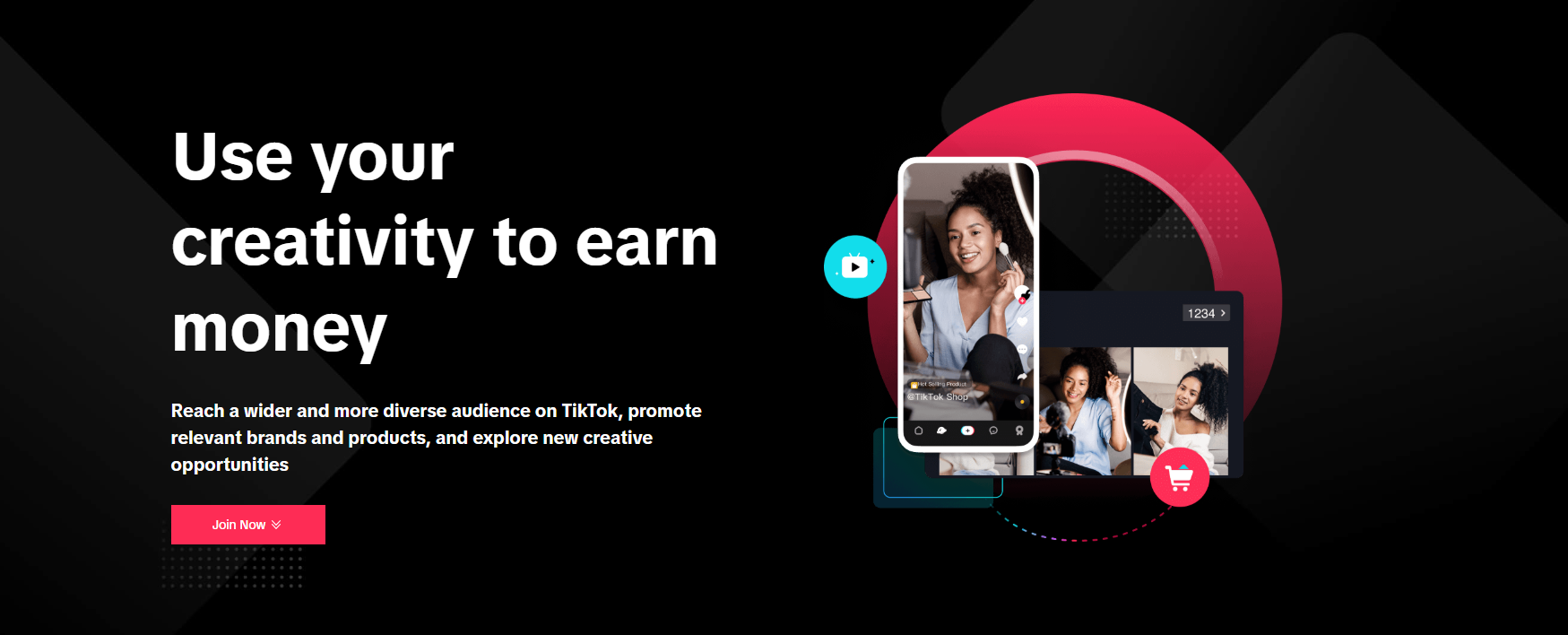
What Features Do You Get?
Viral discovery via algorithm.
Short-form content is fast and fun.
Huge Gen Z and Millennial audience.
Monetize via Creator Fund.
Receive gifts via TikTok LIVE.
Brand sponsorship opportunities.
Add affiliate links in bio.
Promote other platforms (YouTube, Instagram).
Simple editing tools inside the app.
Great for trend-based content.
TikTok is the land of viral content, and it’s helped countless creators skyrocket from zero to influencer status with short, catchy videos.
While it started with dances and memes, it's now a serious platform for educators, artists, coaches, and business-savvy creators.
If you’re creative and enjoy rapid, bite-sized storytelling, TikTok offers exposure and earning potential through its Creator Fund, brand deals, affiliate links, and fan gifts.
Also, it’s an ideal place to build a loyal following and then direct that audience toward your paid products or content on other platforms.
How You Can Earn:
Receive payouts from the TikTok Creator Fund
Accept gifts during TikTok LIVE sessions
Partner with brands for sponsored videos
Add affiliate links in your bio
Drive traffic to courses, shops, or websites
Sell digital products via link-in-bio tools
Offer coaching/consultation via DMs or Calendly
Good Things:
High potential for organic growth through algorithm-driven discovery.
Minimal gear needed – just a smartphone and creativity.
Huge and engaged Gen Z/Millennial user base.
Monetization through Creator Fund and brand deals.
TikTok LIVE enables direct gifting from fans.
Affiliate links in bio boost product sales.
In-app editing tools make content creation fast and easy.
Great for promoting courses, merch, or coaching.
Can easily repurpose content to other platforms (Reels, Shorts).
Ideal for trend-based or entertainment-focused content.
Not-So-Good Things:
Creator Fund payouts are low per view
Algorithms constantly shift; growth can be inconsistent
Why Become a Digital Creator? 7 Reasons You Must Know
Becoming a digital creator is not just about making content. It’s about freedom, fulfillment, and future-proofing your career.
1. Create Your Career Path
You don’t need a degree in digital marketing or a fancy job title. You just need something to share. Your skills, your story, your talent, that’s your product.
People create full-time incomes from artists to accountants, chefs to teachers by turning knowledge and creativity into content.
2. Earn in Multiple Ways (Even While You Sleep!)

Digital creators aren’t tied to one paycheck. They earn through:
Courses & coaching (build once, sell forever)
Subscriptions (monthly income from platforms like EzyCourse, Patreon)
Ad revenue (from YouTube, Medium, or podcasting)
Brand deals & sponsorships
Affiliate commissions (recommend tools, get paid)
Digital product sales (eBooks, templates, stock photos, planners)
Passive income becomes real when your content works 24/7 while you sleep.
3. Work From Anywhere, Anytime
You can build your business anywhere with a laptop and Wi-Fi. You decide your hours. You choose your location. You are your boss.
4. No Gatekeepers, Just You and Your Audience
In the past, you needed a publisher or record label to “make it.” Today? You need the courage to hit “publish.” Your growth depends on your effort, not others' approval.
5. Build a Personal Brand
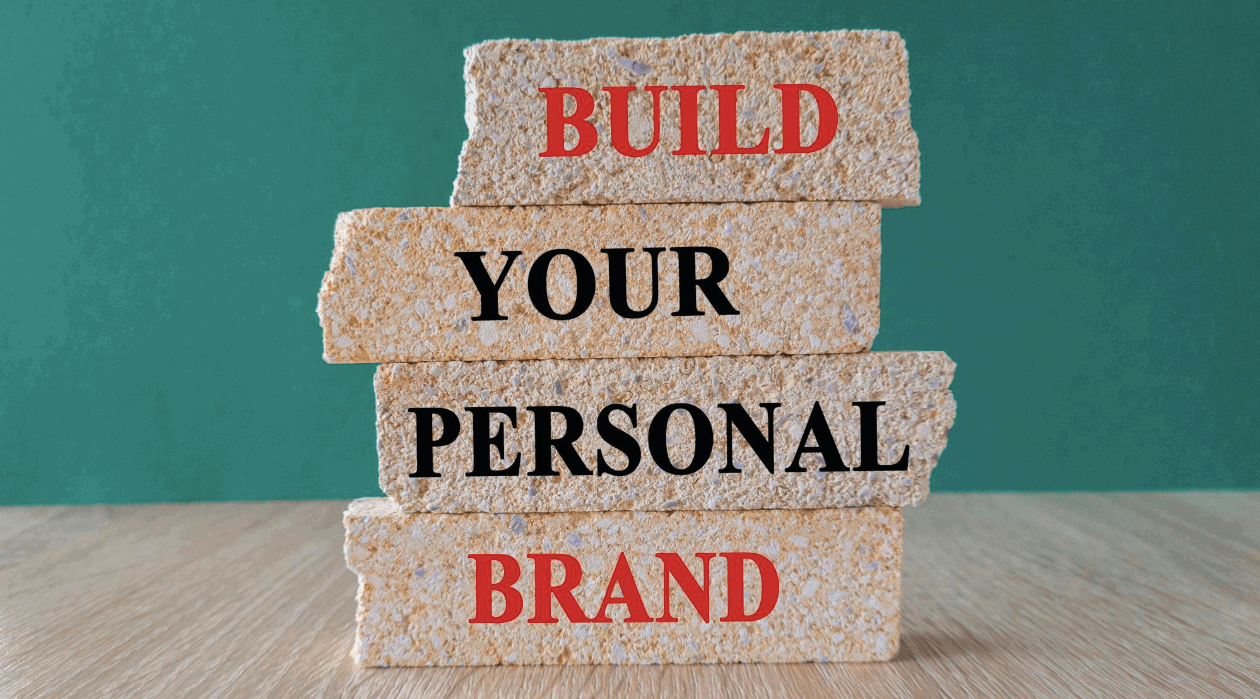
You become more than your job title.
Also, you build a brand that people recognize, trust, and follow, which opens doors to speaking gigs, partnerships, publishing opportunities, and product launches.
6. Make Real Impact
You could:
Help someone feel less alone through your story
Teach someone a skill that changes their life
Inspire someone to take action on a dream
Your voice matters more than you think.
7. Low Startup Cost
All you need to begin is:
A phone or computer
Basic software (many tools are free!)
A platform like EzyCourse to host and sell your content
No inventory. No storefront. Just your ideas and the will to create.
How to Become a Digital Creator: Easy 9 Steps
Turn your passion into powerful content and build a brand that earns. Let’s see how to become a digital creator with simple steps.
Step 1: Find Your Niche (Your Sweet Spot)
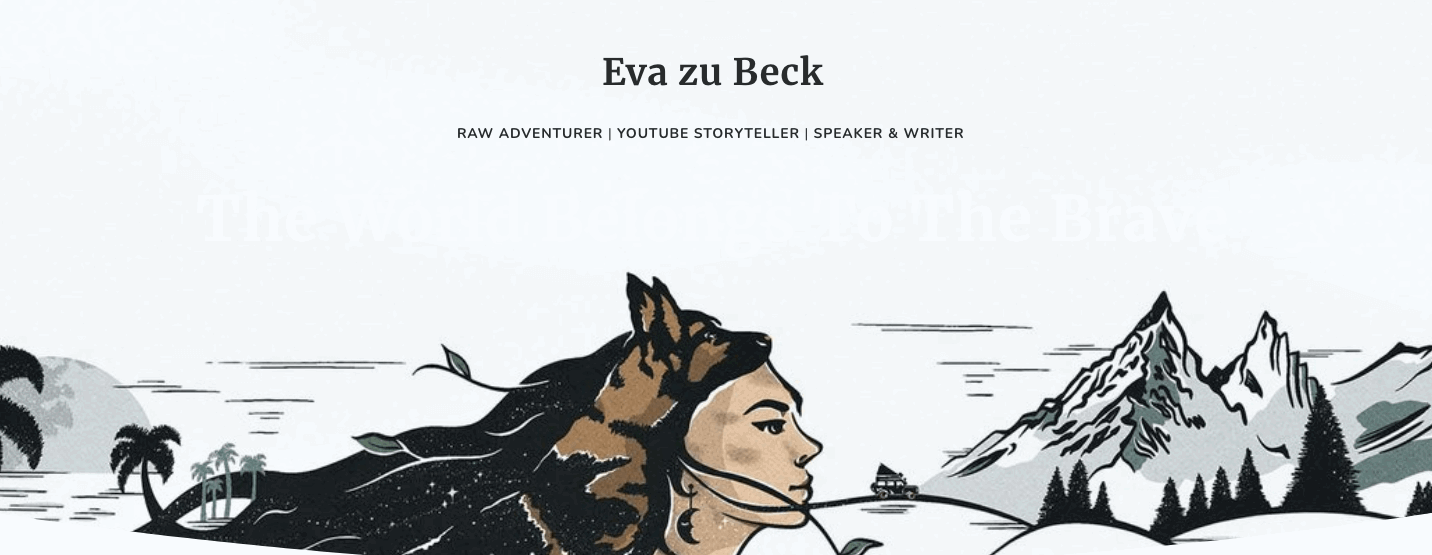
Every successful digital creator starts by answering one question: What do I love talking about and what do people want to hear?
Your niche is where your passion meets audience interest. It could be anything:
Travel vlogs (e.g., Eva Zu Beck sharing raw global adventures)
Tech reviews (like MKBHD on YouTube)
Minimalist living, parenting hacks, book reviews, or even ASMR baking.
Focusing on a niche helps you build authority, makes your content easier to discover, and attracts a loyal, engaged audience.
Tip: Start broad if needed, but niche down as you learn what resonates.
Step 2: Gather Your Tools (Start Small, Dream Big)
Don’t fall into the trap of thinking you need a whole studio to start. Most creators begin with just a smartphone.
Beginner Toolkit:
A smartphone with a decent camera (iPhone, Pixel, or Samsung Galaxy are great)
Natural light from a window or a ring light (~$30)
Lapel mic for better sound (optional but helpful)
Upgrade over time as your audience and income grow.
For example, many YouTubers eventually get DSLR cameras and softbox lights, but not initially.
Step 3: Choose Your Platform(s) Wisely
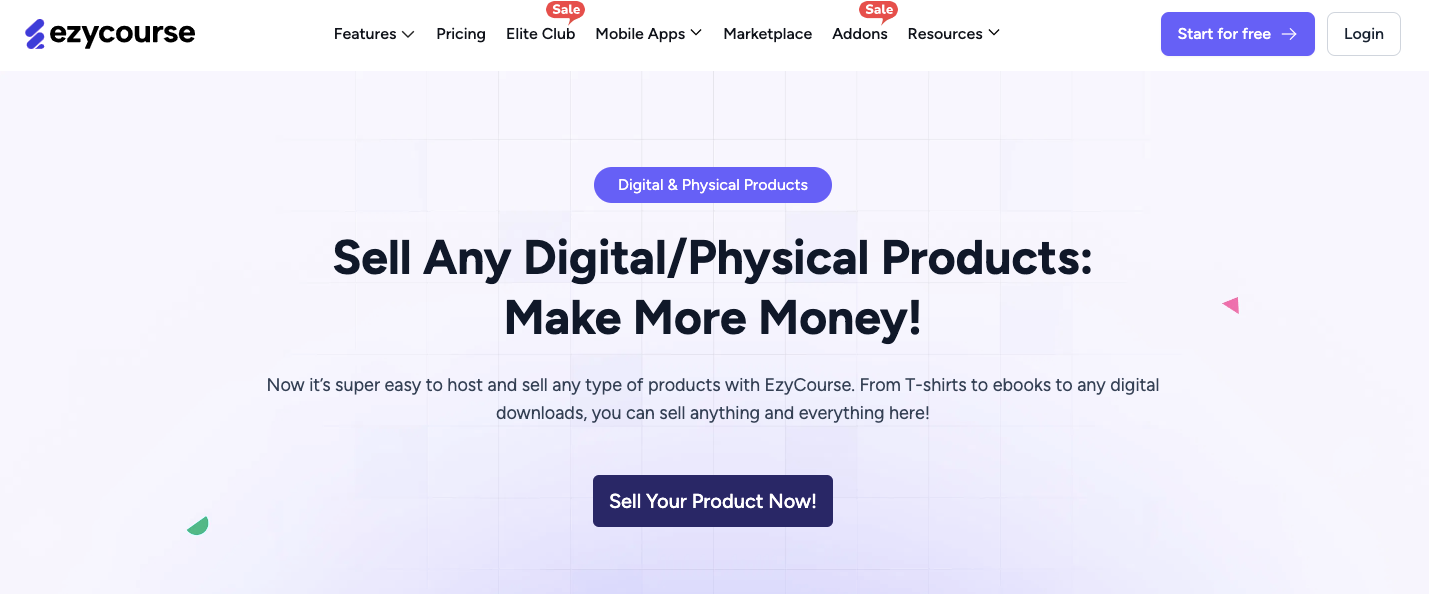
Pick platforms that match your style and where your potential audience already hangs out.
Platform guide:
EzyCourse – best all-in-one platform for creating and selling any digital or physical products
YouTube – best for long-form video, tutorials, vlogs, how-tos
Instagram – great for lifestyle, fashion, reels, photography
TikTok – for viral short-form videos and trends
Blogging (WordPress, Medium) – ideal for writing deep content
Podcasts (Spotify, Apple) – perfect for storytelling or teaching
A personal finance creator might use YouTube for how-tos, Instagram for infographics, and TikTok for quick money hacks.

Step 4: Start Creating and Sharing (Even If It’s Not Perfect)
This is the hardest and most crucial step: just start.
Create content in your niche, and hit publish even if it’s messy. You’ll learn as you go.
Be consistent: Aim for at least 1–2 posts per week. The algorithm—and your audience—rewards reliability.
Test + Learn: Track what performs best (views, saves, shares) and refine your approach.
Step 5: Build Your Brand (Make Them Remember You)
Your brand is your digital personality; it includes your voice, visual style, and values.
Elements to develop:
Username or handle that’s memorable (and available across platforms)
A logo and consistent color palette
A bio that clearly says what you do and why people should care
Example: The Financial Diet has a clean, feminine aesthetic paired with no-nonsense advice, a brand their audience recognizes instantly.
Step 6: Set SMART Goals (So You Don’t Drift)
Clear goals keep you focused and motivated. Use the SMART formula:
Specific: "Grow my Instagram to 5,000 followers"
Measurable: "Post 3 reels per week
Achievable: Start small and scal
Realistic: No 100k subscribers in a week!
Time-bound: “Reach 1,000 YouTube subs in 6 months”
Review goals monthly to stay on track and adjust based on your growth.
Step 7: Grow & Engage Your Community
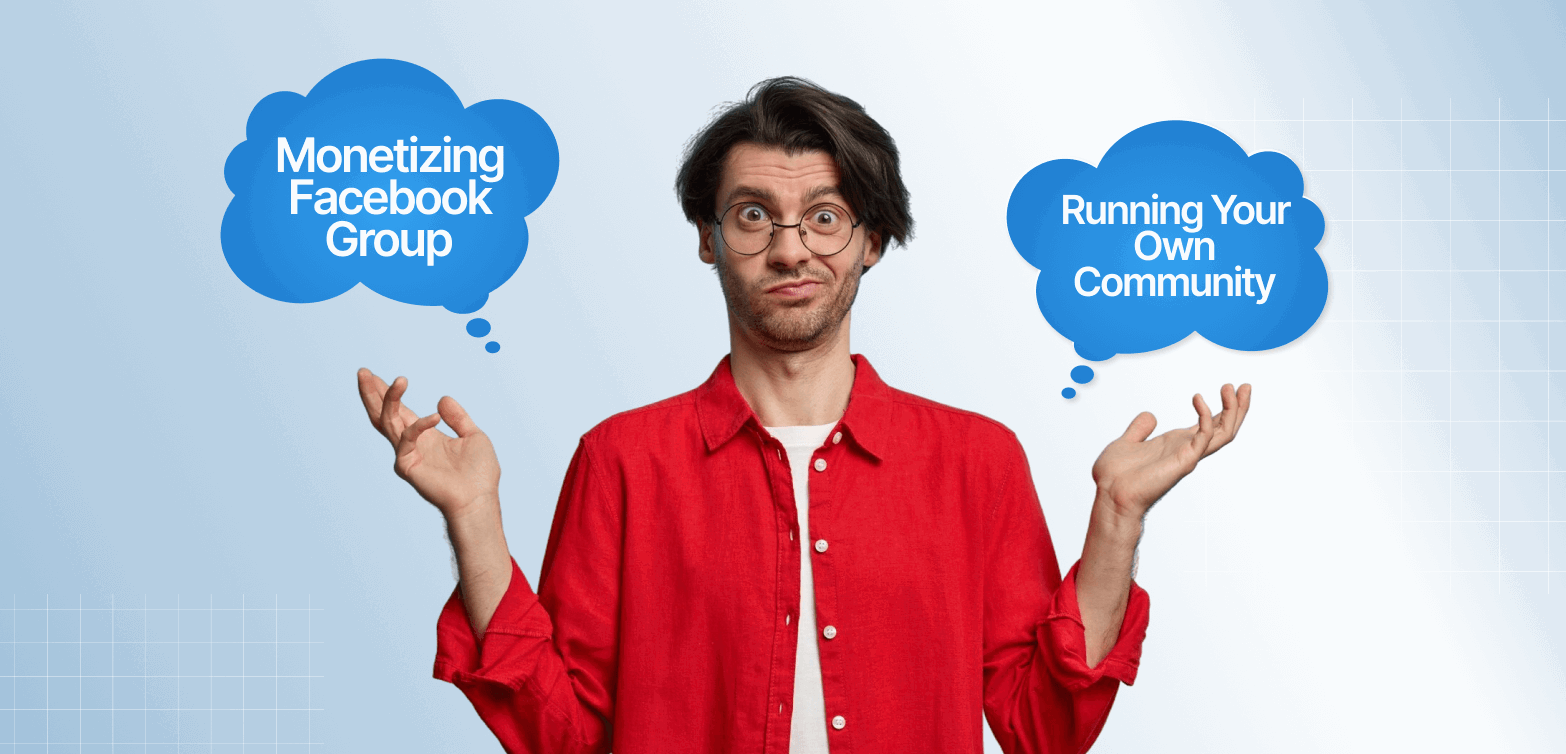
It’s not just about content, it’s about connection.
Respond to comments and DMs.
Ask questions in your captions or videos to invite replies.
Build a community hub like a newsletter, Facebook group, or Discord.
Example: Digital creator Ali Abdaal hosts weekly livestreams and comments back regularly, building deep trust with his fanbase.

Step 8: Keep Learning and Leveling Up
Being a digital creator is a journey of constant learning.
Learn skills like:
Video editing (CapCut, Final Cut Pro, DaVinci Resolve)
Graphic design (Canva, Adobe Express)
SEO (so your content gets found)
Analytics (to know what works)
Online courses, YouTube tutorials, and podcasts are great sources.
Example: YouTuber Matt D’Avella took storytelling courses and used feedback to refine his minimalist lifestyle channel.
Step 9: Monetize (When You’re Ready)
Once you’ve built a following, it’s time to turn your passion into profit.
Popular revenue streams:
Brand sponsorships (paid promotions)
Ads (via YouTube, podcasts, blogs)
Affiliate marketing (recommend products + earn commission)
Selling digital products (ebooks, templates, presets)
Memberships/Patreon
Online courses (using tools like EzyCourse)
Usually, monetization often kicks in once you reach 1,000+ followers or subscribers, but even micro-influencers can earn with the right niche.
How to Become a Digital Creator Today!
The digital creator economy is growing, with more tools, platforms, and opportunities than ever. No matter your passion, you can turn it into a steady income through memberships, digital products, sponsorships, and more.
Your success depends on selecting the right tools to simplify your work and maximize your income. EzyCourse can help with that.
It's an all-in-one platform for digital creators to sell courses, host communities, and accept payments without coding.
With simple pricing and powerful features, EzyCourse helps creators save time and focus on what they do best creating.
So, don't wait! Try EzyCourse now.

